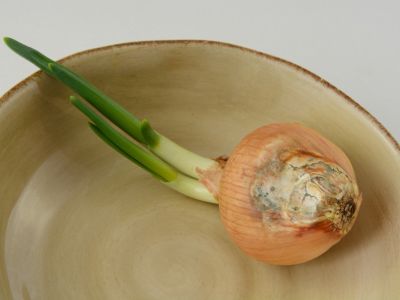What is Onion Soft Rot?
Soft rot in onions is a common disease caused by several types of bacteria. It most commonly affects onions while they are being stored, but contamination or the damage that leads to contamination often occurs during or around harvest. The disease can cause a lot of destruction and significantly diminish yields. Bacterial soft rot infections strike already mature onions. The signs of onion soft rot start with softness at the neck of the bulb. As the infection creeps in, the onion will appear water soaked. Then, one or more scales in the bulb will become soft and brown. If you squeeze an infected bulb, it will emit a watery, smelly substance.
How Onion Bacterial Soft Rot Spreads
Onions become infected with soft rot bacteria through soil, water, and infected plant debris. The infection gets into bulbs through wounds and damage. The infection is most likely to take hold during warm and humid conditions. Any damage to leaves or bulbs can cause the infection to get in, including hail and rain damage, sun damage, freezing, bruising, and cutting the tops of the bulbs during harvesting. Damage while the bulb is still in the ground, and after it has been harvested, can lead to infection. A pest called onion maggot can also spread the disease between plants.
Managing Soft Rot in Onions
Once the disease has set in, there is no treatment that will save a bulb, although it tends to infect just one or two scales. You can prevent infection in several ways though:
Avoid overwatering your onion plants, especially when it is hot out. Make sure your onions are planted in ground that drains well and that you give them space for airflow and to dry out between waterings. Avoid damage to the entire plant while the bulb is developing. Handle harvested bulbs gently to avoid bruising and other types of damage that can lead to infection during storage. Make sure the onion is fully mature before you harvest it; the drier the tops are, the more protected the bulb is from infection. If your onions do get damaged, like after a big storm, you can spray the damaged areas with a copper-based spray to protect against infection.
